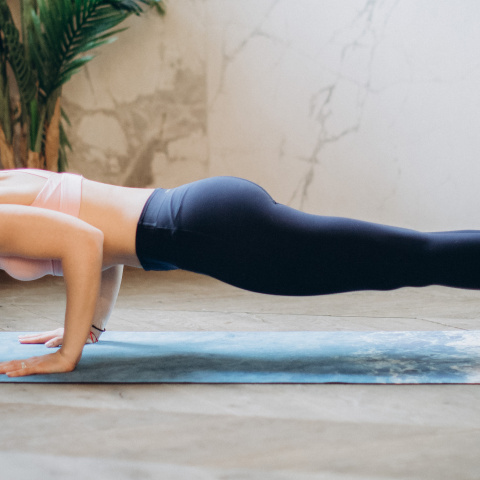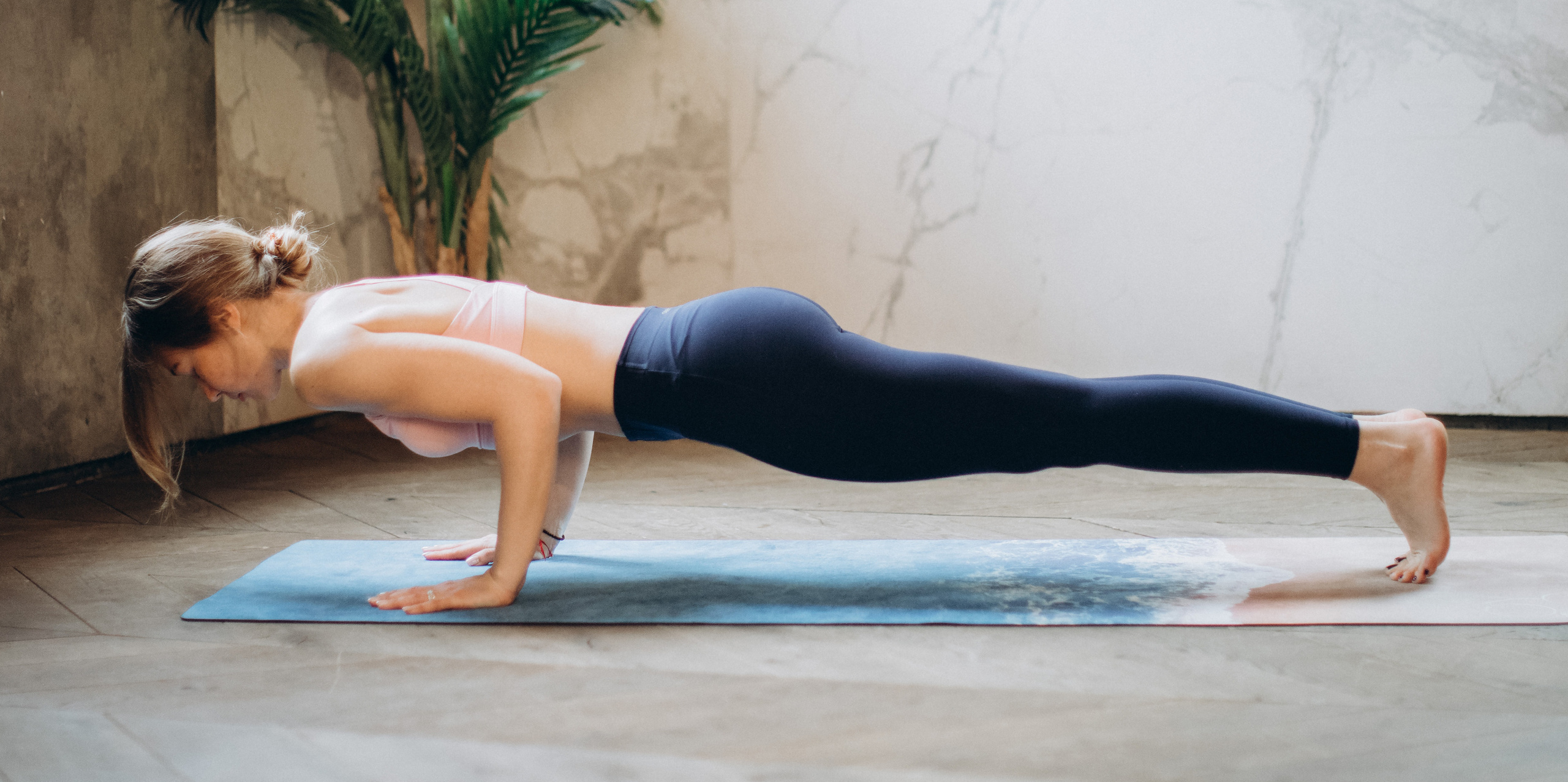The Press Up Test
The press-up test has been used as a crude measure of muscular strength and endurance (MSE) for many years and it’s particularly popular in the uniformed services, including the military, police, fire, and prison service as part of a wider assessment of fitness. In this article, we’ll dissect the pros and cons of the press-up test, including how to perform the assessment correctly.
Maximum muscular force and muscular endurance are both essential components of overall muscle strength. Maximum muscular force is defined as the maximum amount of force a muscle (or group of muscles) can produce during a single contraction. For example, a world’s strongest man competitor, pulling a 22-tonne plane down a runway, is considered to have a very high level of maximal muscular force.
Muscular endurance on the other hand is defined as a muscles (or group of muscles) ability to perform multiple contractions over a given period of time. For example, a rock climber scaling a 6000m mountain, is considered to have a very high level of muscular endurance.

Increased overall muscular strength is linked with:
- Improved ability to carry out the tasks of daily living (e.g. pick up small children, move furniture, carry heavy shopping)
- Improved sporting performance
- Improved ability to be physically active
- Improved body composition (more muscle and less fat)
- Improved recovery from injury
- Improved confidence, mood, and energy levels
- Reduced risk of disability and improved vitality during ageing (maintained independence etc.)
- Reduced cardio-metabolic risk (cardiovascular disease, type 2 diabetes, etc.)
- Reduced severity of musculo-skeletal pain (shoulder issues, low back pain, knee/ hip osteoarthritis)
- Reduced risk of injury during sports and exercise
- Reduced risk of experiencing a fall
- Reduced risk of premature death
However, not everybody has access to appropriate equipment or even sufficient knowledge on how to perform a strength assessment. This is where the press up comes in.
What is a Press Up?
The press up (also known as the push-up) is one of the most widely recognised exercises in the world. A press up generally involves lowering oneself toward the ground and then lifting oneself off the ground.
Mastery of one’s own bodyweight is considered a good achievement in most athletic circles. Through performing this simple action at least once, the ability of the upper body musculature to produce sufficient force to lower/ lift one’s own bodyweight is assessed. By performing as many consecutive repetitions as possible (at a constant bodyweight) within a set amount of time, it is also possible to assess muscular endurance.
General Factors Affecting Press Up Performance
- Age: After the age of 30, there is an age-related reduction in both muscle size and muscle strength (~0.5% per year), commonly referred to as sarcopenia
- Gender Men are more likely to have higher levels of muscular strength, when compared to women, especially in the upper body
- Bodyweight/ composition: Individuals with a higher body mass index (BMI) and/ or higher body fat percentage will have more bodyweight to resist, and reduced muscle quality. This will make the press up movement more challenging
- Training status: An individual engaging in higher levels of physical activity is likely to perform a greater number of press ups, particularly if they engage in upper body resistance training
- Disease: Individuals suffering from chronic health conditions like cancer, and various types of muscular dystrophy are likely to experience muscle wasting and reduced muscular strength

Assessing Press Ups Performed in One Minute (How To)
1. Begin in a standard press up starting position as follows:
- Hands shoulder-width apart (just in front of shoulders)
- Feet separated
- Knees and hips off the ground
- Body and lower back held straight and rigid
- Focusing on a spot six inches in front (don’t look directly down)
The modified starting position is similar except:
- The knees stay in contact with the ground
- The knee joints are flexed to 90° (ankles crossed preferably)
2. From either starting position (modified or standard) the body is then lowered to the ground with elbow flexion, shoulder retraction, and shoulder abduction. The body should be lowered until the elbow is flexed to 90° or the upper portion of both arms is parallel to the ground
3. From this bottom position the body should then be lifted off the ground by pushing the floor away, using elbow extension, shoulder protraction, and shoulder adduction. The body should return to the starting position (arms fully extended) to complete the movement
4. Throughout the lowering and lifting phases an appropriate press up position needs to be maintained throughout the rest of the body (straight body and lower back)
5. Repetitions should generally be performed continuously but short pauses within the time are permitted
6. Repeat this action with good form as many times as possible in a 60 second time period
7. Record the score
Factors Affecting Press Up Assessment
- Starting position: A standard press-up position increases ground reaction force by ~15% compared to a modified position. This will affect how many press ups are performed.
- Hand position: Positioning the hands more narrowly can cause preferential triceps activation, and make the press up movement more challenging. In fact, this is an entirely different movement called the military press up.
- Range of motion: The closer to the ground a person gets during the lowering phase the more challenging the lifting phase will be. Different criteria include the chest touching:
- The ground
- A recorders fist (held vertically against the ground)
- An object placed on the ground under the chest (rolled-up towel or a cone). (This may be more appropriate for women)
- Tempo: The slower both movement phases are performed, the more challenging the press up movement will be.
- Time of day: Typically, people tend to be stronger in the evening compared to the morning.
All such factors should ideally be kept the same between assessments.
Classification of Press Up Performance
In general, the greater number of press ups a person performs the greater the level of upper body muscular strength. The greater a person’s muscular strength (force production and endurance), the lower their risk of poor health outcomes (see above).
Age and gender are the primary factors that should be considered for press up performance classification.
Important note: Women’s reference standards assume press ups are performed with the following modifications:
- In the modified (see above) starting position (see above)
- With reduced range of motion (chest contacts a rolled-up towel)
Therefore, it may be prudent for some women (as well as some men), to begin with these modifications and build up to a more standard press-up position should strength improve over time.
Press up Performance Categories
| Age | 20-29 | 30-39 | 40-49 | 50-59 | 60-69 | |||||
|---|---|---|---|---|---|---|---|---|---|---|
| Gender | Male | Female | Male | Female | Male | Female | Male | Female | Male | Female |
| Excellent | 36 | 30 | 30 | 27 | 25 | 24 | 21 | 21 | 18 | 17 |
| Very Good | 35 | 29 | 29 | 26 | 24 | 23 | 20 | 20 | 17 | 16 |
| Good | 29 | 21 | 22 | 20 | 17 | 15 | 13 | 11 | 11 | 12 |
| 28 | 20 | 21 | 19 | 16 | 14 | 12 | 10 | 10 | 11 | |
| Fair | 22 | 15 | 17 | 13 | 13 | 11 | 10 | 7 | 8 | 5 |
| 21 | 14 | 16 | 12 | 12 | 10 | 9 | 6 | 7 | 4 | |
| Needs Improvement | 17 | 10 | 12 | 8 | 10 | 5 | 7 | 2 | 5 | 2 |
| 16 | 9 | 11 | 7 | 9 | 4 | 6 | 1 | 4 | 1 | |
American college of sports medicine reference standards for press ups (Adapted from Baechle, T.R. and Earle, R.W. eds., 2008. Essentials of strength training and conditioning. Human kinetics).
Important note: Certain individuals (e.g., hypertensive patients) may require appropriate supervision when performing this assessment. Furthermore, the press up assessment should be used as an initial screening tool. Diagnosis of low muscle strength or any specific condition (sarcopenia etc) should only be made by a suitably trained medical professional, following suitably validated assessments.
Sources
Scientific publications
Ebben WP, Wurm B, VanderZanden TL, Spadavecchia ML, Durocher JJ, Bickham CT, Petushek EJ. Kinetic analysis of several variations of push-ups. J Strength Cond Res. 2011 Oct;25(10):2891-4. doi: 10.1519/JSC.0b013e31820c8587. PMID: 21873902.
Cogley RM, Archambault TA, Fibeger JF, Koverman MM, Youdas JW, Hollman JH. Comparison of muscle activation using various hand positions during the push-up exercise. J Strength Cond Res. 2005 Aug;19(3):628-33. doi: 10.1519/15094.1. PMID: 16095413.
Dhahbi W, Chaabene H, Chaouachi A, Padulo J, G Behm D, Cochrane J, Burnett A, Chamari K. Kinetic analysis of push-up exercises: a systematic review with practical recommendations. Sports Biomech. 2022 Jan;21(1):1-40. doi: 10.1080/14763141.2018.1512149. Epub 2018 Oct 4. PMID: 30284496.
Freeman S, Karpowicz A, Gray J, McGill S. Quantifying muscle patterns and spine load during various forms of the push-up. Med Sci Sports Exerc. 2006 Mar;38(3):570-7. doi: 10.1249/01.mss.0000189317.08635.1b. PMID: 16540847.
Calatayud J, Borreani S, Colado JC, Martin F, Tella V, Andersen LL. Bench press and push-up at comparable levels of muscle activity results in similar strength gains. J Strength Cond Res. 2015 Jan;29(1):246-53. doi: 10.1519/JSC.0000000000000589. PMID: 24983847.
Tillaar RVD. Comparison of Kinematics and Muscle Activation between Push-up and Bench Press. Sports Med Int Open. 2019 Sep 5;3(3):E74-E81. doi: 10.1055/a-1001-2526. PMID: 31508485; PMCID: PMC6728153.
Ted A. Baumgartner, Derek Hales, Hyuk Chung, Suhak Oh & Heather M. Wood (2004) Revised Push-Up Test Norms for College Students, Measurement in Physical Education and Exercise Science, 8:2, 83-87, DOI: 10.1207/s15327841mpee0802_3.
Books
Baechle, T.R. and Earle, R.W. eds., 2008. Essentials of strength training and conditioning (human kinetics).

